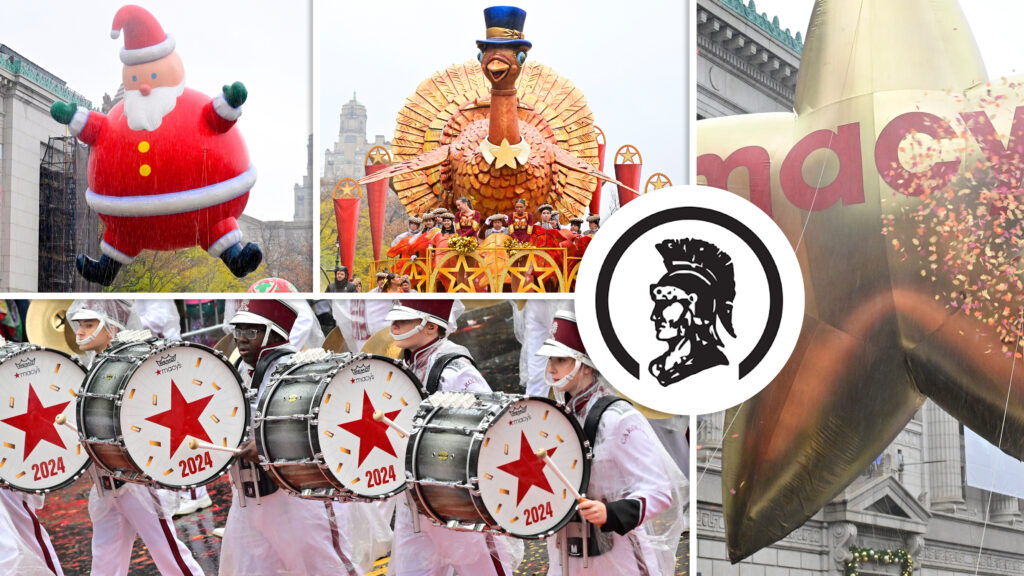
2016 Santa Clara Vanguard | “Force of Nature”
4th Place, 95.300
The concept of the four seasons is one of the most simple and palatable in art. But it’s also one of the most versatile.
At the end of the day, the four seasons can be seen as four unique chapters of a year, and nothing more. But metaphorically, they’re the completion of a life cycle. They’re a tangible image of change and evolution, visually represented in patterns of weather and natural scenery.
2016 was Santa Clara Vanguard’s take on this imagery.
In many ways, though, it was more — whether intentionally or not, it was the final chapter in a life cycle, one that would be drastically reimagined in the three years following. To speak in metaphor, 2016 was a beautiful winter, which welcomed in an intriguing spring in 2017, followed by a warm and fully-grown summer in 2018.
In many ways, 2016’s production was Vanguard’s last in its former design style before diving into those progressions. But as such, “Force of Nature” is often regarded fondly, as “modern classic” Vanguard.
Throughout its production, Vanguard featured a variety of color guard costumes to signify different seasonal aeshtetics. As for the corps proper, 2016 was its last year in its more traditional uniform, a red top and white sash with silver accents, with white pants and its iconic “aussie” hat with towering plumage.
The show opened on a quiet, calm nature scene, set to the sound of soft strings and chirping birds. Members of all sections lay on the ground across the various yard lines, while the color guard became the first to “enter” with rippling choreography.
Vanguard’s full opening movement featured the music of Max Richter’s “Spring 1” from “Recomposed,” a series of reimagined renditions of Vivaldi’s “The Four Seasons.” This opening was, in essence, the show’s spring “bloom.”
“It kind of grows and has this youthful quality to it,” Vanguard brass arranger and composer J.D. Shaw said. “There’s images of larva arriving, the Fibonacci sequence and ratio of life, blades of grass swinging in the wind until finally there’s just a big explosion which is a blossoming of a flower.”
From there, it wasn’t long before the “force” element came into play. After passages of playful front ensemble music, a rich tuba feature and building brass chords, Vanguard’s full horn line and battery percussion section entered with a beautiful and resounding impact of Richter’s work, all capitulated with a strong mellophone sustain — a staple that would make its appearance again in Vanguard’s history-making decade.
Quickly, though, via various ambient sound effects, Vanguard transitioned into the rains of summer, and once again introduced its award-winning percussion section into play, starting with a crystal-clean snare drum feature.
The second movement featured a drastic increase in aggression, typified not only by featured battery percussion moments, but also by energetic brass passages of Stephen Melillo’s high-octane work, “WITHOUT WARNING!”
Calmer tones emerged in the program’s ballad movement, as Vanguard once again displayed its ability to handle wide ranges of emotion and dynamics with precision and taste. Lush, backfield brass chords, met with soft and spacious front ensemble passages, welcomed in a lyrical baritone solo rendition of Frank Ticheli’s “Earth Song.”
To accompany Ticheli’s beautiful harmonic passages, the color guard transitioned into autumnal color palettes, so as to signify the “fall” portion of the seasonal cycle.
The movement ultimately swelled to a strong impact, with the battery percussion and horn line staged in one curving line that transitioned into a straight line across the right side of the field, while the color guard filled the open space in the bottom and left portions of the performing surface, utilizing its warm-colored flowing skirts as flags of sorts for visual effect.

A Madison Scouts flugelhorn soloist stepped in for the oboe from the original piece, stationed on the 50-yard line surrounded by tuba players. The 23-member baritone section picked up the melody next and were eventually joined by the full corps in a robust statement of the introspective melody. The brass players were seen in a rolling arc that brought performers several feet ahead of the front sideline near the 30-yard line.
A baritone soloist closed out the ballad as the horn line retreated to the back corner of the field. Here the hero character climbed atop a podium, catching a flag toss and raising his arms into the air.
A reprise of the indigenous beat from a concert bass drum positioned in front of the backfield podium served as a jarring reminder of the aggressiveness of the first half of the production. Scouts designers said that this Invocation segment “called to the heart of a warrior and spoke to a theme of fraternal courage.” The brass players began to deploy from the back corner, moving in a block formation at a brisk pace — four steps to five yards at a time — toward the center of the field.
Storming back on the competitive landscape
2016 was a major step in a reemergence, competitively-speaking, for Santa Clara Vanguard into the ranks of the “upper echelon.”
In some senses, that rise back to the top began in 2013 and 2014 with back-to-back fourth-place finishes, but after dropping back to fifth place in 2015, the 2016 season was Vanguard’s return to the Top 4, a designation it hasn’t lost in any season since.
It was only the beginning, too. The Santa Clara corps has earned medals — one of each, actually, including 2018’s World Championship title — every year since its fourth-place ranking in 2016.
In terms of the 2016 season itself, Santa Clara Vanguard spent most of the year fending off The Cavaliers, who earned fifth place during a reemergent season of their own. By season’s end, Vanguard finished on somewhat of an island, scoring just shy of two points outside the top three, but more than a point ahead of fifth and beyond.

Other than a close call with the Rosemont corps in Allentown, the standings looked similar through most of the summer.
Speaking of Allentown, The Cadets also took some fending off during the middle portions of the 2016 season; the Allentown corps earned a head-to-head win in its first meeting with Vanguard, but SCV righted the ship during “Texas Tour” to push its way into the top four down the stretch.
The major competitive note for Santa Clara Vanguard — also one that signified the start of a trend — was the corps’ victorious percussion section. 2016 marked the first of now five consecutive wins of the Fred Sanford Award for Best Percussion Performance.





